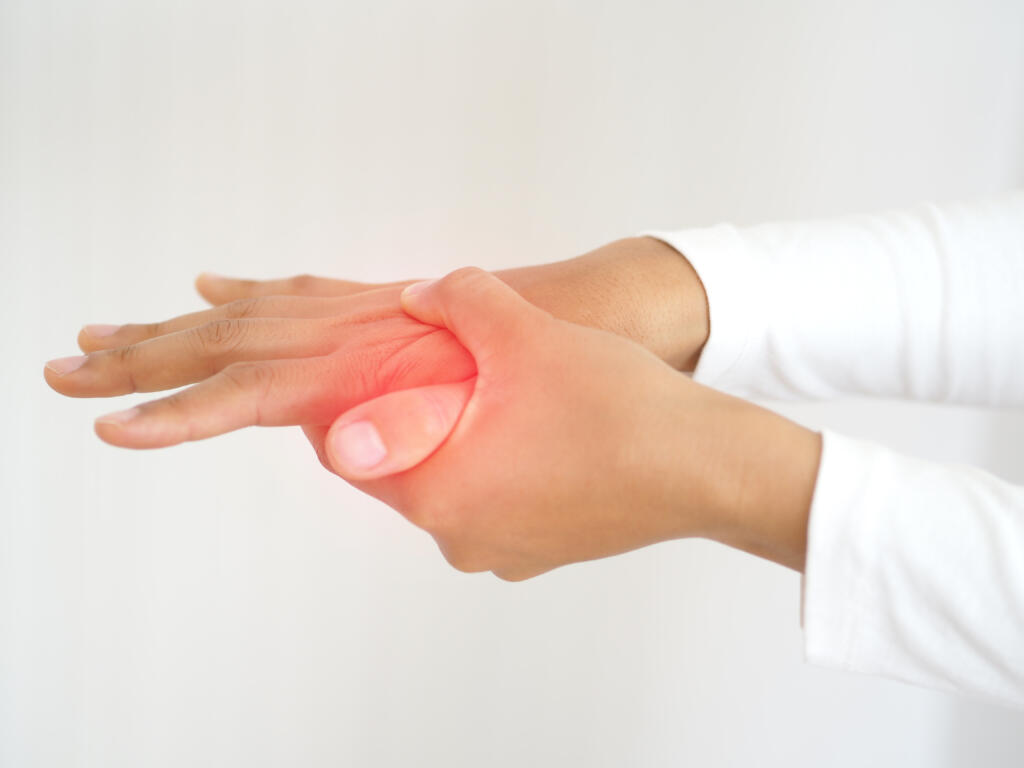You may know about psoriasis, a skin condition that causes uncomfortable, unpleasant symptoms like itchy, scaly plaques and patches. But psoriatic arthritis (PsA), a condition that’s closely related to psoriasis, is lesser-known. While 7.5 million Americans are currently living with psoriasis, just 30 percent of those people will develop psoriatic arthritis¹. And when you develop PsA, your psoriasis suddenly begins causing painful swelling and inflammation in your joints. If you’re looking to learn more about psoriatic arthritis, search online.
Anyone can develop psoriatic arthritis – but if you already have psoriasis, you’re a very likely candidate. That’s why it’s so important to know the signs and symptoms of PsA. You can learn more by searching online.
 jaojormami / Shutterstock
jaojormami / ShutterstockWhat is Psoriatic Arthritis?
Psoriatic arthritis is like many other forms of arthritis. It’s centered in the joints and anywhere tendons and ligaments connect to bone². PsA is a chronic, inflammatory disease, and it currently has no cure. If left untreated and unmanaged, it can lead to comorbidities – more serious health conditions related to PsA.
PsA can affect anyone at any age. However, those who have psoriasis are the most likely to fall victim to the disease.
When psoriatic arthritis appears, it typically falls into one of five types³:
- Symmetric PsA, which affects the same joints on both sides of the body.
- Asymmetric PsA, which affects joints on one side of the body.
- Distal Interphalangeal Predominant PsA, which affects the distal joints on your fingers.
- Spondylitis PsA, which affects part of the spine or the entire spine.
- Psoriatic Arthritis Mutilans, which affects the hands and feet.
While some types of PsA are mild, like symmetric and asymmetric PsA, others can be more serious and significant, like Psoriatic Arthritis Mutilans. It’s important to check with your doctor if you’re experiencing any type of joint pain that might be arthritis. You can search online to find PsA doctors in your area.
Who’s At Risk for Psoriatic Arthritis?
Psoriatic arthritis can affect anyone, but certain people are more at risk for this disease than others. It typically only appears in those who’ve already been diagnosed with psoriasis – it generally shows up within 10 years of your psoriasis developing. But in some cases, PsA can actually appear before psoriasis ever presents any symptoms.
Typically, psoriatic arthritis appears in individuals who are between 30 and 50 years old⁴. However, it can appear in children. Men and women have an equal risk of developing PsA.
Additionally, your family history plays a role. If anyone closely related to you, such as having a sibling or parent, has PsA, you’re more likely to develop it yourself.
The Most Common Signs and Symptoms
Wondering what psoriatic arthritis looks and feels like? Well, it’s pretty similar to other types of arthritis.
Like other types of arthritis, PsA can affect joints anywhere in the body. It can affect just one side or both sides; it can affect a single joint or multiple joints. And it can vary significantly in its severity, causing symptoms that are mild and easily managed or completely debilitating.
The symptoms of PsA are the most similar to those of rheumatoid arthritis⁵. Both of these diseases cause pain in the joints, and the affected joints can become swollen and warm to the touch.
But PsA can also cause its own individual symptoms. These can include⁶:
- Swollen fingers and toes.
- Swelling and deformities in the hands and feet (sometimes without joint pain).
- Foot pain, particularly where tendons and ligaments attach.
- Lower back pain.
Because psoriatic arthritis is a chronic disease, it does worsen over time. So, if you start experiencing symptoms, they will likely get increasingly more painful and problematic. Additionally, symptoms can come and go. Both psoriasis and PsA can enter remission, or periods where symptoms improve or seem to disappear. Then, during flares, those symptoms can return or worsen.
To ensure you’re getting treatment for your symptoms, make sure to see a doctor as soon as you first experience joint pain. Search online to find experienced PsA doctors in your area.
How Psoriatic Arthritis is Treated
Psoriatic arthritis is a chronic condition with no cure. But that doesn’t mean you have to sit idly by while your joints – and your pain – worsen over time. There are plenty of treatment options available for PsA sufferers.
Treatments for PsA target the symptoms of the disease. The available treatment options range from oral medications to biologic therapies, which are typically injected. All of these treatments work to reduce inflammation and swelling, slow joint damage, and combat your most concerning and discomforting symptoms.
In order to get the latest and greatest treatments for PsA, you’ll want to see a rheumatologist. These doctors are specialists who treat all types of arthritis and related conditions, and they’re often experts in psoriasis and psoriatic arthritis. A rheumatologist can help you get the treatment you need and help you discover your available treatment options.


